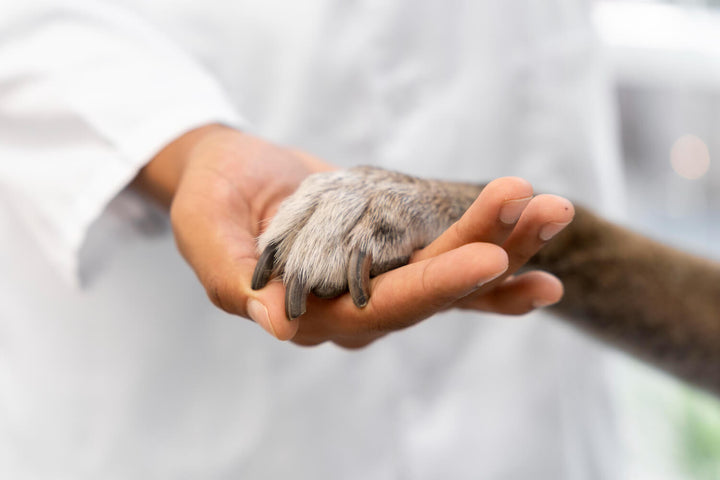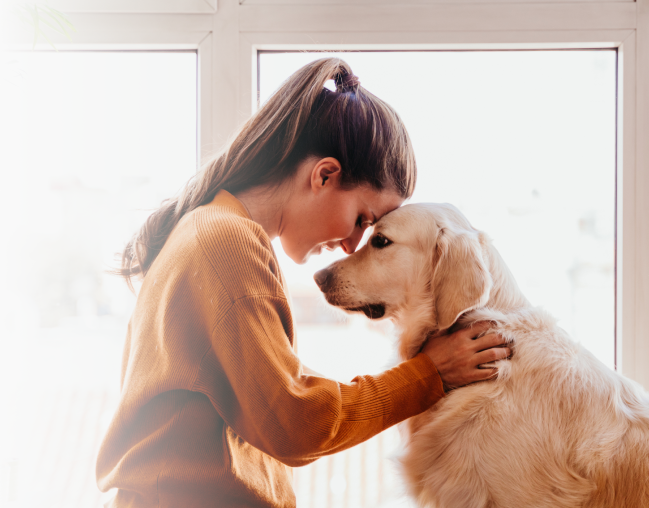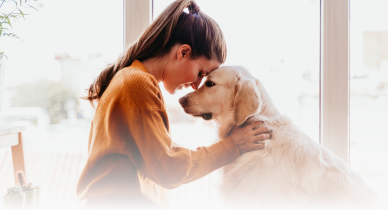The Borzoi, often referred to as the "Russian Wolfhound," is a majestic and regal breed known for its striking appearance and graceful demeanor. These dogs are a living testament to elegance and speed, embodying a combination of strength and refinement that has captured the hearts of dog enthusiasts for generations.
Did You Know these Facts about the Borzoi?
-
Borzois have a rich history that dates back to ancient Russia. They were originally bred by Russian aristocracy for hunting wolves, a task at which they excelled due to their incredible speed and agility.
-
Despite their aristocratic roots and wolf-hunting lineage, Borzois are remarkably gentle and affectionate companions. They are known for their calm disposition and have earned a reputation as gentle giants of the dog world.
-
Borzois are sighthounds, which means they rely on their keen eyesight to track and chase prey. Their hunting instincts are still present, so they may be prone to chasing smaller animals.
-
These dogs are characterized by their long, slender bodies, arched backs, and narrow heads. Their silky, flowing coat adds to their striking appearance, and they come in various colors and markings, making each Borzoi a unique work of art.
- Borzois make excellent companions for families who appreciate their quiet and well-mannered nature. They tend to be reserved around strangers but form deep bonds with their loved ones.
While Borzois may not be as common as some other breeds and ranked modestly at #101 in the AKC’s popularity list, they enjoy a dedicated following among dog enthusiasts, Their unique combination of beauty and grace makes them a treasured breed among those who appreciate their noble heritage.

Traits of the Borzoi Breed
Overall Personality. Borzois are known for their gentle and calm demeanor. They are typically quiet dogs that carry themselves with an air of dignity. While they are not overly demonstrative, their loyalty and affection for their families run deep.
Family Life. These dogs can be excellent family pets, especially in homes with older children who understand the need to respect their calm nature. They are well-behaved indoors and appreciate a comfortable, quiet environment.
Physical Appearance. Borzois are elegant dogs with long, narrow heads and graceful necks. Their silky coat can come in various colors, including white, black, cream, brindle, and more. Unique markings add to their beauty, with options such as patches, spots, or stripes.
Sociability. Borzois tend to be reserved around strangers but form strong bonds with their families. They can coexist with other dogs, especially if properly socialized from a young age. However, their strong prey drive may lead them to chase smaller animals.
Average Sizes & Life Expectancy
- Height: 27 to 33 inches tall (68 to 85 cm)
- Weight: 75 to 105 pounds (34 to 48 kg)
- Life Expectancy: Around 10 to 12 years
Detailed Description of the Borzoi Breed
The Borzoi, often called the "Russian Wolfhound," is a breed that effortlessly combines elegance, grace, and power. With a history dating back to the aristocratic courts of Russia, these dogs have captured the imaginations of dog enthusiasts worldwide. In this detailed description, we'll delve into every aspect of the Borzoi breed, providing you with a comprehensive understanding of these magnificent dogs.
Physical Appearance. These dogs are known for their elegant and aristocratic appearance. They possess long, slender bodies with gracefully arched backs and a deep chest. Borzois stand tall on long, lean legs that end in small, hare-like feet. Their heads are narrow and refined, featuring a long muzzle and a distinctive "Roman nose" with a slight upward curve. Expressive almond-shaped eyes, usually dark in color, reflect their gentle and intelligent nature.
Temperament and Personality. These dogs are renowned for their gentle and calm disposition. They tend to be reserved around strangers but form deep bonds with their families. Their loyalty knows no bounds, and they thrive on the love and attention of their human companions. Borzois are not typically known for barking excessively. They carry themselves with a quiet dignity and an air of regality. While they are highly trainable, Borzois also possess a streak of independence. They may not be as eager to please as some other breeds, but with patient and consistent training, they can excel in obedience.
Adaptability. Due to their calm demeanor indoors, Borzois can adapt well to apartment living, provided they receive sufficient exercise and mental stimulation. While they are not overly active indoors, Borzois do require regular exercise to keep them in good physical and mental health. Long walks and the opportunity to run in a secure, fenced area are essential for their well-being. Borzois can make excellent family pets, especially in homes with older children who understand the need to respect their calm nature. They tend to get along well with other dogs, especially when properly socialized.
Care Guidelines. Regular grooming is necessary to maintain their luxurious coat. Brushing a few times a week helps prevent mats and keeps their coat in top condition. Borzois shed seasonally. Early socialization and consistent, positive reinforcement training are essential. Their independent nature requires patience, but with the right approach, they can be well-behaved and obedient companions. Borzois are generally a healthy breed, but they can be prone to certain health issues, including bloat (gastric torsion), hip dysplasia, and heart problems. Regular veterinary check-ups and a balanced diet are vital for their overall health.
Training Strategies. It's important to note that Borzois have a strong prey drive, owing to their history as hunting dogs. They may be prone to chasing smaller animals, so supervision is essential. Training them requires patience and love.
Notable in History and Pop Culture. The Borzoi has a storied history that is intertwined with the aristocracy of Russia. Originally bred by Russian nobility for wolf hunting, they were considered a symbol of aristocracy and privilege. Borzois often appeared in Russian literature and art, further cementing their status as a cultural icon.
In pop culture, Borzois have made appearances in various films and books. Perhaps one of the most famous depictions of Borzois in cinema is in the classic movie "The Fisher King," where they play a significant role. Their regal appearance and distinctive presence have made them memorable characters on the silver screen.
What to expect when living with the Borzoi Breed
Personality. Borzois are renowned for their gentle and dignified demeanor. They are quiet, reserved, and tend to carry themselves with an air of regality. These dogs form deep bonds with their families, displaying loyalty and affection. While they may not be as demonstrative as some breeds, their love for their human companions runs deep.
Ideal Environment. Borzois can adapt to various living environments, including apartments, provided they receive sufficient exercise and mental stimulation. However, they truly thrive in homes with access to a secure, fenced area where they can stretch their long legs and run freely. Due to their calm nature indoors, they make excellent companions in quiet households.
Maintenance Level. While Borzois have a relatively low-maintenance coat when it comes to shedding, their long, silky fur does require regular grooming to prevent mats and maintain its beauty. Brushing a few times a week is essential, and occasional baths keep them clean and fresh. Additionally, their independent nature may require patient and consistent training, making early socialization crucial.
Overall Health Expectations and best Health Tests for the Borzoi Breed
Health Considerations. Borzois are generally a healthy breed with a relatively long lifespan. However, like all breeds, they are prone to specific health concerns:
- Bloat (Gastric Torsion). This is a potentially life-threatening condition in which the stomach fills with gas and twists. It's crucial to be aware of the symptoms, including restlessness, bloated abdomen, and attempts to vomit. Immediate veterinary attention is necessary in suspected cases.
- Hip Dysplasia. Borzois can be susceptible to hip dysplasia, a condition where the hip joint doesn't develop properly. Regular hip evaluations are recommended, especially for breeding dogs.
- Heart Issues. Some Borzois may develop heart problems, including dilated cardiomyopathy. Regular veterinary check-ups, including cardiac evaluations, can help monitor their heart health.
- Eye Conditions. They may be prone to certain eye conditions like progressive retinal atrophy (PRA) and cataracts. Annual eye exams are advisable.
- Osteosarcoma. This breed has a slightly higher risk of osteosarcoma, a type of bone cancer. Regular vet visits and early detection are vital.
Recommended Health Tests. For responsible Borzoi ownership, it's crucial to collaborate closely with a veterinarian who understands the breed's specific health needs. Regular check-ups, a balanced diet, and an active lifestyle contribute to their overall well-being. When considering breeding, it's essential to perform recommended health tests to ensure the health of future generations of Borzois. While they may have a few health considerations, with proper care, Borzois can enjoy a long and healthy life as beloved family members.
Best Nutrition, Diet & Supplements for the Borzoi Breed
Nutrition and Diet. Borzois thrive on high-quality dog food that meets their specific nutritional needs. Look for dog foods that list meat, poultry, or fish as the primary ingredient. Avoid foods that contain excessive fillers like corn, soy, or wheat, as these can be challenging for Borzois to digest. Protein is a critical component of a Borzoi's diet, as it supports their lean muscle mass. Look for dog foods with a protein content of around 20-25%, which is suitable for most Borzois. Protein sources should include lean meats like chicken, turkey, and fish.
Dietary fat is a source of essential fatty acids that contribute to a healthy coat and skin. Aim for a moderate fat content of around 10-15% in their food. Sources of healthy fats include fish oil and flaxseed.While Borzois do need carbohydrates for energy, they should not be the primary component of their diet. Look for dog foods with carbohydrates derived from sources like sweet potatoes, peas, and brown rice.
Hydration is Key. Ensure your Borzoi always has access to fresh, clean water. Proper hydration is vital for digestion, temperature regulation, and overall vitality.
Supplements. While a well-balanced diet should provide most of the essential nutrients Borzois need, there are specific supplements that can benefit their health. Borzois can benefit from omega-3 fatty acid supplements, such as fish oil. These supplements support their skin health and coat sheen. As a preventive measure against hip dysplasia and other joint issues, consider supplements containing glucosamine and chondroitin sulfate. These can help maintain joint health, especially as Borzois age.
Foods to Avoid. Chocolate contains theobromine, which is toxic to dogs. Grapes and Raisins can lead to kidney failure. Onions and Garlic can damage a dog's red blood cells. Xylitol, this artificial sweetener is found in many sugar-free products and can be toxic. Excessive fatty foods can lead to pancreatitis. Processed and Sugary Foods contribute to obesity and other health issues.
Grooming Requirements for the Borzoi Breed
Coat Maintenance and Shedding. Borzois have a moderately low-maintenance coat, but their long, silky fur does require regular grooming to keep them looking their best and feeling comfortable. Borzois benefit from regular brushing, ideally a few times a week. Brushing helps remove loose fur, prevents matting, and stimulates the skin's natural oils. A slicker brush or a pin brush can work well for their long coat. Borzois are moderate shedders, with most shedding occurring seasonally. Be prepared for increased shedding in the spring and fall, and use regular brushing to manage loose fur.
Paw Care and Hygiene. Borzois have delicate, hare-like feet. Regularly check their paws for any cuts, scrapes, or foreign objects that may become lodged between their toes. Keeping their paw pads moisturized with a dog-safe balm can help prevent dryness or cracking.
Bathing Frequency. While Borzois are not prone to a "doggy odor," they may benefit from occasional baths, especially if they've been romping outdoors. Use a gentle, dog-specific shampoo to maintain their coat's natural oils and luster.
Exercise Required for the Borzoi Breed
Borzois are known for their elegance and grace, but they are also athletes at heart. To keep them happy and healthy, they require a fair amount of exercise. These dogs are born runners, and they thrive on the opportunity to stretch their long legs. Off-leash running in a secure, fenced area is ideal for them. A Borzoi should have the chance to sprint and run freely several times a week.
Daily walks are essential to Borzoi well-being. A leisurely stroll may not suffice; they enjoy longer walks where they can explore their surroundings. In addition to physical exercise, Borzois benefit from mental stimulation. Puzzle toys, obedience training, and scent games can engage their minds and prevent boredom.
Training Tips for the Borzoi Breed
Proper leash training is essential due to their prey drive. Borzois may be tempted to chase smaller animals when on a leash. Early training and a secure leash are crucial.
Do…
-
Use positive reinforcement techniques such as treats, praise, and affection to motivate and reward your Borzoi for good behavior.
- Early and extensive socialization is crucial to help them become well-adjusted adults. Expose them to various people, animals, and environments from a young age.
- Be consistent in your commands and expectations. Borzois respond well to routine and clear communication.
- While they are sensitive dogs, gentle corrections are sometimes necessary. Use a calm and composed demeanor when providing corrections.
Don't…
-
Use harsh punishment or physical corrections, as it can harm the Borzoi's sensitive nature and lead to fear or aggression.
- Neglect socialization as it can result in shyness or fearfulness in adulthood. Early and ongoing socialization is essential.
- Due to their prey drive, avoid off-leash activities in unfenced areas where they may be tempted to chase small animals.
- Skip daily activities. Insufficient exercise can lead to boredom and destructive behavior. Regular physical and mental exercise is crucial.
The Borzoi Breed is Suitable For
Borzois are well-suited for certain types of homes, and understanding their needs is crucial for a harmonious living arrangement: They are relatively adaptable when it comes to living spaces. While they can thrive in apartments, they truly excel in homes with access to a secure, fenced yard where they can run freely. The opportunity for regular off-leash exercise is highly beneficial.
Borzois can make wonderful additions to families, especially those with older children who understand the need to respect their calm and dignified nature. Their gentle disposition makes them suitable for homes with considerate youngsters. With proper socialization, Borzois can coexist with other pets, including dogs of similar size and energy levels. However, their strong prey drive may pose challenges with smaller pets like cats or rabbits.
Individuals or families who enjoy outdoor activities, such as hiking or jogging, will find a Borzoi to be a willing and capable companion. Their athleticism and speed make them great exercise partners.
The Borzoi Breed is Not Suitable For
While Borzois can adapt to apartment living, it may not be the most suitable environment for their energetic nature. Apartment dwellers should be prepared to provide ample exercise and mental stimulation.
Borzois are not well-suited for households with rowdy play or excessive noise. Their calm and dignified nature may not thrive in chaotic or overly active homes.They also have a strong prey drive and may be prone to chasing smaller animals. For their safety and the safety of other pets, a securely fenced yard is essential.
Famous Borzoi Owners
- Tsar Nicholas II of Russia - The Borzoi breed has deep roots in Russian aristocracy, and Tsar Nicholas II, the last Russian emperor, was a notable owner. He had a fondness for Borzois and owned several. Fun fact: Tsar Nicholas II and his family were tragically executed during the Russian Revolution in 1918, but some of their Borzois were fortunate enough to escape and find new homes.
- Jack London - The renowned American author Jack London, best known for classics like "The Call of the Wild" and "White Fang," was also a Borzoi enthusiast. He owned a Borzoi named Mazy and even featured the breed in some of his writings.
- Coco Chanel - The iconic fashion designer Coco Chanel was an admirer of Borzois and often featured them in her fashion campaigns. She was photographed with her beloved Borzois, and their elegant presence perfectly complemented her brand's aesthetic.
Accomplishments of the Borzoi Breed
Borzois have made their mark in various fields, earning recognition and admiration for their unique qualities:
Historically, Borzois were bred for wolf hunting by Russian nobility. They were prized for their speed and agility in pursuing and capturing wolves, a testament to their incredible hunting abilities. While there are no specific world records associated with Borzois, their exceptional speed, often reaching 35 to 40 miles per hour, has left an indelible mark on the world of canine athleticism. They are celebrated participants in lure coursing events, showcasing their incredible speed and agility.
Borzois have made appearances in literature, art, and even film. Jack London's writings often featured Borzois, and their elegant form has been captured by artists like Alphonse Mucha. In cinema, Borzois have appeared in various films, including the classic "The Fisher King," where they played memorable roles.
The History of the Borzoi Breed
Creation and Purpose. This elegant breed was originally developed in Russia during the 17th century. Its creation was primarily driven by the desire to have a hunting dog that could excel in pursuing swift and agile game, such as wolves, hence the breed's name.
The breed's ancestors were brought to Russia from Central Asian regions, including Persia and Arabia. These dogs were crossed with native Russian breeds, resulting in the Borzoi's distinctive appearance and capabilities. Their striking, long, and silky coat, complemented by their tall and slender physique, made them not only exceptional hunters but also symbols of aristocracy and prestige among the Russian nobility.
Borzois were utilized for hunting in open terrains where speed and endurance were essential. Their refined senses of sight and smell, coupled with their swift running, made them invaluable in chasing down game. They could cover vast distances in pursuit of their quarry, and their ability to bring down wolves, which were a significant threat to livestock and communities, made them indispensable.
Early Roles and Evolution. As time passed, the role of the Borzoi shifted. With the decline of wolf populations in Russia and changing hunting practices, their primary purpose evolved. They became more of a status symbol and a showpiece in the courts of Russian nobility. Selective breeding further refined their appearance, emphasizing their regal and graceful qualities.
The breed faced challenges during the Russian Revolution and both World Wars, but enthusiasts and breeders worked diligently to preserve its lineage. Post-World War II, Borzois started to gain recognition in the United States and other parts of the world, expanding their role beyond hunting to become beloved companions and show dogs.
Changes and Modern Impact. Today, the Borzoi is admired for its elegance, grace, and gentle demeanor. While their hunting prowess is less frequently called upon, they continue to captivate dog lovers with their majestic appearance and amiable personality. This breed's journey from a fierce hunter in the Russian wilderness to a cherished family companion is a testament to its enduring adaptability and timeless allure.
The Borzoi Breed Standard
According to the American Kennel Club (AKC), the Borzoi belongs to the "Hound" group. This group encompasses breeds originally developed for hunting and tracking game. Borzois fall under this group due to their historical role as sighthounds used for pursuing game, especially wolves, in Russia.
The formal breed standard for the Borzoi, as per the American Kennel Club's (AKC) guidelines, describes the ideal Borzoi that serves as a benchmark for judging in dog shows.
The national breed club for the Borzoi recognized by the AKC is the "Borzoi Club of America, Inc." You can find more information about this breed club, including resources and events, on their official website: Borzoi Club of America
General Appearance
Head, Muzzle, Nose. The Borzoi's head is a masterpiece of refined beauty. It is long and narrow, with a graceful slope from the forehead to the tip of the nose. The skull is flat and the stop, which is the indentation between the forehead and the muzzle, is subtle. The overall effect is a head that exudes an air of aristocracy and reality. The Borzoi's muzzle is long and tapering, perfectly complementing the length of the head. A distinguishing feature is the "Roman nose," which features a slight upward curve at the end of the muzzle. This unique characteristic adds to the Borzoi's distinctive and noble appearance.
Teeth. Borzois possess a strong and complete set of teeth, with a scissor bite. The teeth are white and well-aligned, reflecting their overall sense of elegance and symmetry.
Neck. One of the most captivating features of the Borzoi is its long, arched neck. This neck is a testament to the breed's grace and contributes to their overall impression of refinement. It flows seamlessly from the head into well-laid-back shoulders.
Body. Borzois have a slender, well-proportioned body that conveys both grace and strength. Their deep chest provides ample room for their vital organs and gives them the lung capacity needed for their impressive stamina. Their ribs are well-sprung and their back is straight and firm.
Tail. The Borzoi's tail is a thing of beauty. It is long and tapers to a fine point, often reaching down to the hocks. When at rest, the tail is carried low and gracefully, but during movement, it may be raised in a gentle curve.
Coat. Perhaps one of the most enchanting features of the Borzoi is its luxurious coat. The coat is silky and flat, with a soft undercoat that provides insulation. Borzois come in a variety of colors and markings, including white, black, cream, gold, brindle, and more. Their coat's beauty and flowing appearance contribute to their overall elegance.
Size. Borzois are a large breed, with males typically standing between 28 to 33 inches at the shoulder, and females slightly smaller at 26 to 31 inches. Their weight ranges from 75 to 105 pounds. Their size is proportionate to their overall elegance and athleticism.
Gait. The Borzoi's gait is a sight to behold. Their movement is fluid, graceful, and efficient. They have a ground-covering stride that reflects their sighthound heritage. When they run, they seem to float effortlessly, covering a lot of ground with each stride. This elegant gait is a testament to their impressive athleticism and hunting prowess.
Reputable Breeders
For those seeking a well-bred Borzoi there are reputable breeders who prioritize health, temperament, and the breed's standard. Here are a few notable breeders:
Top Shelters for Adoption
Adopting a dog can be a rewarding experience. Here are five shelters where you might find a Borzoi in need of a loving home:
Top 5 Frequently Asked Questions & Answers about the Borzoi Breed
What is the origin of the Borzoi breed?
The Borzoi, also known as the Russian Wolfhound, originated in Russia during the 17th century. They were developed by crossing Central Asian sighthounds with native Russian breeds to create a dog capable of hunting swift game like wolves.
What are the typical characteristics of a Borzoi?
Borzois are known for their tall and elegant appearance. They have a long, silky coat, a slender body, and a graceful gait. They are gentle, loyal, and have a calm demeanor, making them excellent companions.
Do Borzois require a lot of exercise?
Yes, Borzois are an active breed and do need regular exercise to stay happy and healthy. Daily walks and opportunities to run in a secure area are essential. However, they are also known for their "couch potato" tendencies and enjoy lounging indoors with their owners.
Is the Borzoi a good family dog?
Borzois can be good family dogs, but they are generally better suited to families with older children due to their gentle nature and sensitivity. They may not tolerate rough play from young children.
How do I groom a Borzoi's long coat?
Grooming a Borzoi's coat requires regular brushing to prevent matting and remove loose hair. They shed seasonally, so more frequent brushing may be needed during those times. Regular nail trimming, ear cleaning, and dental care are also important parts of their grooming routine.
A Final Tip for Bringing a Borzoi into Your Life
If you're considering welcoming a Borzoi into your life, you're in for a unique and rewarding experience. These dogs bring a touch of elegance and grace to any home. With their gentle and dignified demeanor, they make wonderful companions for those who appreciate their aristocratic heritage.
Borzois thrive in environments where they have space to stretch their legs and engage in regular exercise. If you lead an active lifestyle and enjoy outdoor activities, a Borzoi could be your perfect partner. Their athleticism and speed make them stand out in various canine sports and activities.
Valuable Resources for Your Journey to Parenting a Borzoi
At Felicitails you will find many wonderful services, supplies and guides for your life ahead with a loving pup at your side.

Hope You Enjoyed The Read!
Tag Cloud

A warm welcome from Lindsay & Huck (my English Pointer). Hope you enjoy the read and find just what you are looking for when it comes to living your best life with your loved pets.

-
Dog Breeds
(42)
-
Emotional Support Animals
(10)
-
Dog Grooming
(6)
-
Dog Health
(18)
-
Life with a Dog
(18)
-
Dog Nutrition
(11)
-
Service Animals
(11)
-
Dog Training
(5)







